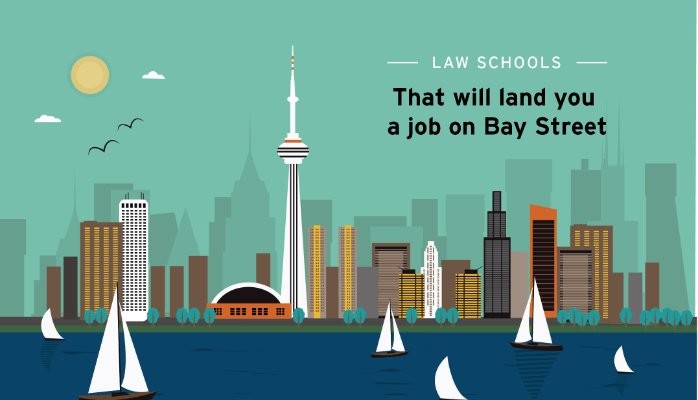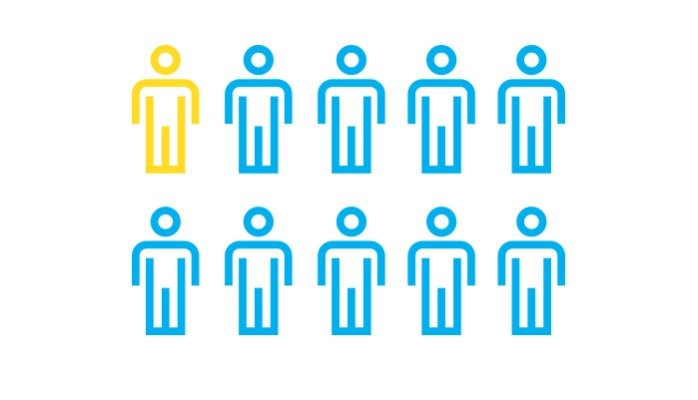Law Schools that will land you a job on Bay Street

Maclean’s Magazine compares law schools every year. Osgoode Hall has routinely ranked in the bottom third* when it comes to “elite firm hiring”, one of the several aspects the Magazine considers to determine “graduate quality”. It is an interesting study, but it doesn't seem to portray the fact that 22% of the lawyers that currently work with one of the “Seven Sisters” studied law at Osgoode, putting the school in first place, even ahead of U of T (21%).
Alma mater, matters! The best Law Schools are a direct conduit to the best law firms
Let’s focus on one single stat: which law schools can claim a greater percentage of their graduates employed in Canada’s biggest law firms? But first of all, why consider only Big Law? Although talented lawyers can be found in smaller firms, public service, universities and companies, large law firms have tailor-made selection processes intended to secure the best articling students. Later on, they’ll apply rigorous filters to verify reputation and the portability of a lateral’s practice.
Here are the stats we obtained after crunching the data of nearly 4,000 Big Law lawyers nationwide. Use the first year enrolment charts to help you gauge the size of each faculty.


Law schools that will land you a job on Bay Street
If you’re bound for Bay Street, the chart below will help you see what those firms are made of:


When considering the amount of students of each faculty, U of T graduates seem to be the most successful in getting hired by Big Law all across Canada.
As to the “Seven Sisters”, more than half of the partners and associates went to Osgoode Hall or U of T. Next time we will have a closer look at the Sister's numbers.
* Osgoode ranked 10 out of 16 in the “Elite Firm Hiring” section of the 2013 edition; up from nº12, in the 2009 edition. ** First year enrolment information was obtained from oxfordseminars.ca. The number for University of Montreal was approximated by the author.
Multi-Bar Lawyers in Canada

Are you admitted to practice law in multiple jurisdictions?
If so, you might be among the 12.1% of Canadian lawyers working at large firms who can flash more than one badge to appear in court. If you think that the most common combination is to be admitted to practice both in Québec and in Ontario, you might have to guess again. Oddly enough, 31% of “multi-bar lawyers” in Canada are allowed to practice in the state of New York.
We analyzed the profiles of 3,142 lawyers who currently work in Canada’s largest law firms
We analyzed the profiles of 3,142 lawyers who currently work in Canada’s largest law firms and surveyed quite a few partners and lawyers from such firms.
Under national mobility agreements many lawyers are allowed a limited practice in other provinces; however, only those that are called have no restrictions when representing their clients’ interests.
This article, when stating a lawyer is admitted to practice refers to those that are fully licensed.
Roughly, only 1 out of 10 lawyers who work in these big and competitive law firms can practice in more than 1 jurisdiction. Is this an asset to these already top-notch lawyers? Absolutely, it sets them apart from the crowd:
· 12.1% of these multi-bar lawyers have been called to more than 1 bar
· 1.6% have been called to 3 bars
· 0.2% have been called to 4 or more
How unique is your combination?
A compelling law-firm bio reads: “Jane Roe is one very few lawyers whose call to both the Quebec and Ontario Bars qualifies her as a ‘national’ practitioner”. Jane Roe is among the 12.8% multi-bar lawyers who combine ON & QC bars. Other common combinations are:
· AB & ON: 16.8%
· BC & ON: 16.5%
· Any province & any territory: 9.0%
· BC & AB: 8.8%

However, the most common combination for a lawyer in Canada actually does not involve any of the Canadian provinces or territories, but rather the State of New York:
· Canadian bar & NY: 31.1%
· ON & NY: 21.5%
“It has been useful to my practice”
Many multi-bar lawyers could argue that, in their case, this was a result of having had to update their credentials upon moving to another province or territory.
But what about the increasing number of lawyers being admitted to practice in the Territories? Why are most lawyers with more than 3 calls to different bars specialized in litigation, environmental law or aboriginal law? Or why would someone in the area of capital markets be admitted to all Prairies and the Yukon?
For many it has been a strategic decision.
Litigation attorney Keith Marlowe, an associate at Blakes, is among the 0.06% of lawyers in Canada who can actually appear before courts in more than 6 jurisdictions both in the US and Canada. He uses his Alberta and Ontario bar calls on a daily basis. His multiple-bars have helped him to speak the technical language required in each jurisdiction. For example, Alberta has adopted the term “questionings for discovery”, whereas other provinces use “examinations”; in the US the proper term is “depositions”. England and Wales have their own jargon that is familiar to him as well, because in fact, he is admitted to practice there too. 8% of Canada’s multi-bar lawyers have been called to the Bar of England and Wales.
Maxime Faille is a partner in Gowlings' Ottawa Aboriginal Law and Litigation Group. He has been called to the NWT, Yukon, and Ontario bars, and has an impending call to the Nunavut bar. In his words: “the northern jurisdictions do not participate in mobility and, as such, an ability to practice law on behalf of clients there is quite limited.” Multi-bar membership has been essential to his engagement in constitutional litigation in the territories and incidentally helpful to his practice in Aboriginal law, where he deems that having multiple bar calls is increasingly the norm and something necessary.
Mathew Good, a Vancouver associate of Blakes’ litigation group claims that his 5 bar admissions, quite a record, have helped him comply with the Inter-Provincial Mobility Agreement that sets practice limits on lawyers who haven't been called to the relevant bar. Matthew points out that these admissions to multiple-bars “have been beneficial to my practice, because they have given me – through examinations and admission – deeper familiarity with jurisdictions in which I regularly practice, as well as respect and connection with members of those Law Societies.”
Bill McNaughton, a partner at BLG is licensed to practice in BC, Alberta and Yukon. This has been especially useful to his practice in TeamNorth®, a section of BLG servicing Nunavut, Northwest Territories, Yukon and the upper regions of several provinces.
Patrick Floyd is a partner at Gowlings Ottawa office. He has been called to the New York, Ontario and Nunavut bars. This has not been due to him moving from one place to the other, but rather an asset to his practice in aviation. His combination is actually an excellent blend of Canadian provinces and Territories and the US.

